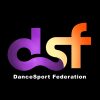Adjudicator
An adjudicator is a person certified by a Professional DanceSport Organization to evaluate a DanceSport couple's performance based on given criteria.
Overview#
Judges (also referred to as adjudicators) are often or formerly experienced competitors and instructors. Judging is both an objective and subjective process
What sorts of things do judges look for? Posture, correct musical timing, pleasing lines, musicality and expression, appropriate characterization, and overall performance are elements crucial to judging any form of dance. On top of those qualities, DanceSport adds elements related specifically to dancing in a partnership, such as:
- how the couple holds each other (is it symmetrical between the two partners and does it always look relaxed and pleasant?)
- how connected they look (does each partner fulfill their lead or follow role in a technically correct manner without negatively affecting the other, so that the couple looks effortlessly synchronized?)
- how grounded they look (is the couple correctly using their feet, legs, and bodies to achieve a controlled, powerful, movement across the floor?)
- how well they navigate a floor full of couples (does the couple navigate its way around the floor as much as is appropriate for the dance without interfering with other couples?).
Having a large judging panel helps to ensure that different views and philosophies of dance are represented, as each judge may have his or her own beliefs and opinions about what constitutes good dancing. Some judges may emphasize some of the above factors over others.
The dancers also have the challenge, especially in earlier rounds, of trying to get the attention of the judges during the ninety seconds or so that they are dancing. As noted, this is one of the reasons that audience participation is encouraged: with more than a dozen dancers at a time, the judges only have a few seconds to spend on each dancer on the floor to make their picks.
Criteria for Judgment of Competitions#
The criteria that a judge might choose to consider are actually too numerous to examine individually in the brief time allotted, since at least six couples are being judged simultaneously. Therefore, the judge must rely on the impression each couple makes relative to the others. The experienced judge, having seen and studied dancing at all levels, can quickly assess these factors collectively:
POSTURE – One of the most important aspects. Good posture makes you look elegant and exude confidence. It improves balance and control, and allows your partner to connect well to your body during the dance. One’s competition result is often directly proportional to one’s postural correctness. Hence the old adage, “Persistent practice of postural principles promises perfection.”
TIMING – If a couple is not dancing in time with the music, no amount of proficiency in any other aspect can overcome this. The music is boss.
LINE – By this we mean the length and stretch of the body from head to toe. Attractive and well-executed lines, either curved or straight, enhance the shapes of the figures.
HOLD – The correct and unaffected positioning of the body parts when in closed dancing position. For instance, the line of the man’s arms should be unbroken from elbow to elbow. Also, there should be symmetry of the man’s and woman’s arms coming together to form a circle, which, although changing in size, should remain constant in shape so that the dancers remain in correct body position relative to each other. The silhouette of the couple should always be pleasing.
POISE – In American Smooth, the stretch of the woman’s body upwards and outwards and leftwards into the man’s right arm to achieve balance and connection with his frame is very important. Poise is also important to project outwards to the audience.
TOGETHERNESS – The melting of two people’s body weights into one, so that leading and following appear effortless, and the dancers are totally in synchronization with each other.
MUSICALITY AND EXPRESSION – The basic characterization of the dance to the particular music being played and the choreographic adherence to musical phrasings and accents; also the use of light and shade to create interest value in response to these accents and phrases. For instance, in Foxtrot, the stealing of time from one step to allow another to hover; or a quick speed of turn in an otherwise slow Rumba, or the snap of a head to suddenly freeze and then melt into slowness in Tango.
PRESENTATION – Does the couple sell their Ballroom dancing to the audience? Do they dance outwardly, with enthusiasm, exuding their joy of dancing and confidence in their performance? Or do they show strain or introversion?
POWER – Energy is exciting to watch. I’ve noticed that, in a jive, it always seems to be the most energetic couple that wins this dance. But the energy must be controlled, not wild. For instance, powerful movement is an asset in Waltz or Foxtrot, but only if it is channeled into the correct swing of the body, and not just by taking big steps. The rhythm of the music must be matched by the action of the body. In a Waltz for instance, the dancers’ body action must clearly show the influence of the one down beat and two up beats. So the release of power into the beginning of a figure must be controlled and sustained during the rise at the end of the figure.
FOOT AND LEG ACTION – The stroking of feet across the floor in Foxtrot to achieve smoothness and softness; the deliberate lifting and placing of the feet in Tango to achieve a staccato action; the correct bending and straightening of the knees in Rumba to create hip motion; the extension of the ankles and the pointing of the toes of the non- supporting foot to enhance the line of a figure; the sequential use of the four joints (hip, knee, ankle, and toes) to achieve fullness of action and optimal power; the bending and straightening of knees and ankles in Waltz to create rise and fall; the use of inside and outside edges of feet to create style and line all fall under this most important of categories.
SHAPE – Shape is the combination of turn and sway to create a look or a position. For instance, in Paso Doble does the man create the visual appearance of maneuvering his cape? Does the lady simulate the billowing flow of the cape through space? In Foxtrot, does the man use the appropriate shape on outside partner steps to enable body contact to be maintained?
LEAD AND FOLLOW – Does the man lead with his whole body instead of just his arms? Does the lady follow effortlessly or does the man have to assist her?
FLOORCRAFT – In Ballroom dance, this refers not only to avoiding bumping into other couples, but the ability to continue dancing without pause when boxed in. It shows the command of the couple over their choreography and the ability of the man to choose and lead figures extrinsic to their usual work when the necessity presents itself.
INTANGIBLES – Such as how a couple “looks” together, whether they “fit” emotionally, their neatness of appearance, costuming, the flow of their choreography, and basically whether they look like “dancers” all have an affect on a judge’s perception and therefore on his or her markings.
Different judges have different predilections in what they want to see, and weight these factors differently. One judge, for instance, might be especially interested in technique, while another wants to be moved by musicality and expression. While both factors are obviously important and need to be considered, it can result in couples getting widely disparate markings. Couples wondering what a judge saw to give them a particularly high or low mark should know that any one of the many factors listed in this article could be responsible. The use of a heel when a toe is warranted can just as easily hurt you in a judge’s eyes as a meticulous closing of feet can help. Because the judge sees each couple for only a few seconds, anything that draws the attention, either positively or negatively, could very well be the deciding factor on how you are marked.
Competitors, please be assured that virtually no qualified adjudicator will mark you for any reason other than his or her honest evaluation of your performance. Most judges hold their own opinions highly, and try to do a conscientious job. Anyway, no one judge can make or break you. The use of a panel of these experts usually insures that the end result is the correct and equitable one.
Scoring and Placement#
In preliminary rounds leading up to a final round of an event/heat, the judges are asked to “recall” a certain number of dancers to the next round. Judges select to recall couples they think are the best and the couples with the most marks move into the next round.
Once six or seven couples reach the final, DanceSport uses the skating system method to determine the results. This means that the judges rank every couple in every dance from 1st through 6th or 7th. The couple with the most 1st place marks is the overall winner. The couple with the next highest number of 1st or 2nd place marks will place second, and so on. Tiebreaker rules determine which couple finishes higher in the event of a tie. These rules can be very complex, and an official known as a Scrutineer has the painstaking task of taking all the judges’ marks and tabulating the results for callbacks and making the necessary calculations to determine the placements, applying the tiebreaker rules in close cases.





